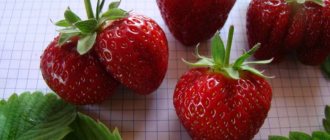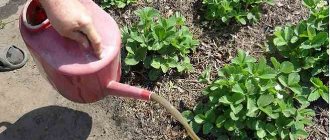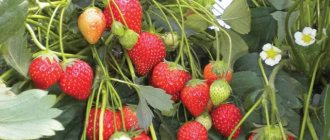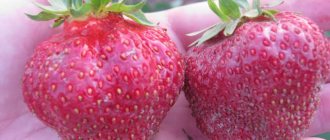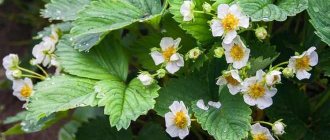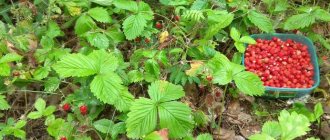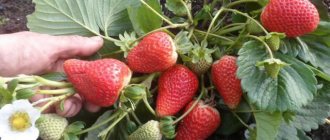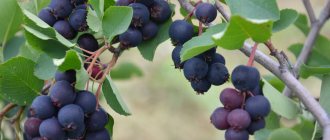Gardeners strive to plant the best variety of strawberries on their plots. It is difficult to choose from the variety that breeders currently offer. Each variety has its own advantages, disadvantages, and growing characteristics. They all have one thing in common: they require care and attention from the gardener. The strawberry variety Marmelada or Marmolada is distinguished by good yield, attractive evenly-shaped fruits, but a sour taste and is more suitable for processing.
Description of the variety
Strawberry Marmalade is a high-yielding variety of Italian selection with a medium ripening period. Suitable for growing on farm plantations and in personal garden plots.
Bushes
Beautiful Marmalade bushes are powerful and spreading. The plant produces so many inflorescences that they are able to cover large dark green leaves. This variety is distinguished by its low susceptibility to chlorosis.
Marmalade's mustache produces an average amount, sufficient for reproduction, but not excessive, which would require constant monitoring and removal
Berries
Large fruits weighing 20-30 g have a regular conical shape with a pointed end (the largest specimens have the appearance of a scallop). Ripe berries are bright red, shiny, and may not be colored at the tip, even when fully ripe.
The berries have a very attractive appearance and uniformity in size. Marmalade has one interesting feature. When the fruit reaches technical ripeness and turns red, it is dense and stores well. However, it will take some time for the strawberries to become balanced in terms of acid and sugar levels. You need to catch the moment when the ripe berry goes through all the stages. When fully ripe, it will become somewhat softer and juicier, much tastier, but the shelf life will still be high.
Strawberry Marmalade is positioned as a variety for processing (drying, preparing candied fruits, freezing). There are sweeter and more aromatic varieties for fresh consumption.
Productivity
The first Marmalade berries ripen in the first half of June. The main harvest occurs at the end of the first summer month. In the southern region, you can expect a second harvest by the end of August - beginning of September. To achieve this effect, old leaves are removed and the plant is fed. The second wave of berries may be even larger than the summer ones. This “out-of-season” feature is used for growing in greenhouse conditions.
From the bush they get 700-1200 g of berries (14-17 t/ha). The variation in yield is explained by different intensity of fertilizing and the influence of climatic conditions
Harvest and storage
Delicious jam is one way to enjoy strawberry flavor in winter
June has arrived - the time for sweet berries to ripen. Harvesting is done manually, at intervals of 1–3 days. The berry is removed from the bush along with the stalk, so it is stored longer and does not lose juice. Prepare several containers for collection at once. Place berries in one for storage in the refrigerator, in another for processing or freezing, and in the third for eating. The berries collected in this way will not have to be transferred several times, which will help maintain its integrity and extend its shelf life.
Of course, it is best to eat the berries fresh while they contain a lot of vitamins and microelements. But sometimes a good harvest makes you think about options that increase the shelf life of garden strawberries. You can do this in several ways:
- For better preservation in the refrigerator, berries should be kept in low and flat cardboard or wooden containers, laid in 2 - 3 layers, but no more. Do not wash strawberries before storing them in the refrigerator. Do not close containers tightly. The shelf life of berries at temperatures from 0 to 2°C is about 5 days. At 6°C - 3 days.
- Frozen strawberries can be stored for up to six months. Berries prepared for freezing are washed and laid out on napkins to dry. It is better to remove the stalk after defrosting. The dried berries are placed on a tray and sent to the freezer, preferably with a temperature of -25 to -35°C. After freezing, the berries are packaged in bags and stored at a temperature of -12°C. Do not repeat the freezing procedure, after which the berries will simply spread.
- Marmalade also makes wonderful jams and confitures, preserves, compotes, berries mashed with sugar, purees, and candied fruits.
Marmalade makes wonderful candied fruits
a brief description of
Advantages of the variety
In general, the variety is characterized by unpretentiousness to growing conditions and numerous advantages that gardeners value.
- beautiful, aligned, large berries;
- good yield with minimal care;
- tolerates drought and heat well;
- possibility of obtaining a second harvest.
Disadvantages of the variety
The disadvantages are such that not all gardeners undertake to grow this variety:
- mediocre taste, if the summer is cold and rainy, then the taste characteristics deteriorate even more;
- high demands on soil acidity, only neutral soil is needed.
Garden strawberries “Marmalade”: advantages and disadvantages of this variety
Like all herbaceous plants, garden strawberries of the “marmalade” variety have advantages and disadvantages.
The advantages can be listed:
- The fruits are large in size, ideal in shape, with amazing taste and a delicate aroma.
- A large amount of harvest, despite the fact that the plant is not whimsical. Just select a site with a large enough area for further growth and development of the root system. Choose an area with sufficient sunlight.
- Marmalade strawberry seedlings have a high level of drought resistance.
- Prefers drip irrigation, which makes your task easier.
- Capable of long and long-distance transportation.
The disadvantages include :
- Sour taste when grown in unfavorable weather conditions.
- The soil should be neutral (pH 6.5-7).
- Weak immunity to various diseases.
Indeed, garden strawberries of the “marmalade” variety can only be grown in special climatic and weather conditions.
Landing
In the south, where winters are warm, marmalade is planted in the fall. In regions with harsh winters, it is better to plant in the spring. The bushes will most likely be accepted in both cases, we are talking about the duration of adaptation. If plants planted in the fall are not able to get stronger before the cold winter, in the spring they will take a long time to recover and increase their vegetative mass.
The site is chosen to be flat and well lit by the sun. The more sun the better. Clay soil is diluted with coarse sand. Sandy soil is “glued” with humus and saturated with universal nutritional compounds.
To obtain consistently high yields, care must be taken to neutralize acidic soil or acidify alkaline soil. Achieve pH range: 5.2-5.5.
The powerful, spreading Marmalade should not be planted too densely. The yield will be good if the plant feels free; even frequent fertilizing will not compensate for the density. Leave at least 35-40 cm between bushes, 50 cm between rows.
With dense plantings, not only does the yield decrease, but the taste characteristics of the fruit also suffer
Strawberry Marmalade: reviews from those who planted
Below are reviews from gardeners about Marmalade strawberries who grow the variety in their summer cottages.
Marina, 44 years old, Engels:
“We have been growing these strawberries on our plot for several years now, my family is delighted with the taste of the Marmalade berries - they are really tasty and sweet like marmalade. The strawberry plantation was irrigated by drip irrigation, although the water was from an artesian well, so it was slightly cool. But strawberry bushes have high immunity, so diseases have not yet affected Marmalade.”
Growing and care
Caring for Marmalade strawberries includes a set of standard procedures.
Watering
Marmalade does not tolerate drought very well, but excessive dampness is extremely harmful for it. In the absence of precipitation, it needs to be watered every 4-5 days. Watering is permissible using both the drip method and sprinkling. With a lack of moisture, the bushes quickly wither and the berries become dry.
Loosening, weed control
After each watering, the soil is loosened. This helps get rid of weeds and provide air flow to the roots. The use of mulching material is indicated. Straw, sawdust, and agrofibre are suitable for these purposes.
Dense coverings in the form of roofing felt or film cannot be used as mulch for Marmalade. The plant needs air and space
Removing a mustache
The variety does not produce a lot of whiskers, but they should be trimmed in a timely manner so that the rosettes do not draw nutrients from the fruiting bush. In addition, young plants uncontrollably thicken plantings.
Top dressing
In early spring, the plant is fed with nitroammophoska (a tablespoon per 10 liters of water) or a complex of a bucket of rotted manure, 100 g of superphosphate and 120 g of potassium sulfate.
Additional nitrogen fertilizers in mid-spring (20 g of urea per 10 liters of water) will help bushes weakened by the cold winter to quickly grow green mass. 1 liter is enough for one plant. solution. The final fertilizing with nitroammophos and potassium fertilizer is done in the fall.
If you plan to get a second wave of harvest, then, at the end of summer fruiting, the bushes need to be fed with organic matter.
In the third year after planting, the strawberry plantation is renewed.
Pest and disease control
The risk of developing diseases and pest damage will be minimal if you follow preventive measures:
- do not thicken the plantations;
- remove mustache in a timely manner;
- fight weeds;
- do not allow the soil to become waterlogged;
- loosen the soil after each watering;
- Renew the beds every 3 years.
Covering a bed of strawberries with black non-woven material gives an excellent effect. This mulching material prevents pests from multiplying in the soil and provides an excellent microclimate for the plant roots, protecting them from fungus. In the fall, before wintering, the bushes are treated with 1-2% Bordeaux mixture. Marmolada can be affected by brown spot. At the first signs of the disease, treatment is carried out with the following drugs: Switch, Chorus, Strobe. Spraying must be carried out at least a month before fruiting.
Preparing for winter
For the winter, beds with strawberries are covered with spruce branches, straw, and corn stalks. The top can be additionally covered with agrofibre or cardboard.
In the southern regions, where in winter the temperature does not drop below -3℃, strawberries do not need shelter.
Stages of feeding strawberries of the Marmalade variety
The more actively fertilizers are applied to Marmalade’s strawberry plantation, the more generous the harvest will be as a result. However, you need to remember that overfeeding these plants is just as bad as adding too few nutrients.
Therefore, mineral and organic substances for fertilizing Marmalade strawberries should be applied strictly according to the instructions, without exceeding the dosage of the preparations.
GOOD TO KNOW!
• How to feed strawberries throughout the season
Organic matter (humus, compost, ash) is added in the spring and during the flowering of strawberries. After harvesting, mineral fertilizers containing phosphorus and potassium need to be applied to the soil during the summer and autumn.
Reproduction
Strawberries of the Marmalade variety propagate in the classic way - by mustaches. To obtain high-quality planting material, no more than 10 rosettes of the first and second order are left on each uterine bush.
A well-developed rosette should have at least 3-4 leaves and a branched root system. After being cut off from the mother bush, the rosette must be given the opportunity to adapt independently for several days and only then transplanted to a permanent place. Another option is to root rosettes in plastic disposable pots. Seedlings with a closed root system take root better in a new location.
Given the weak immunity to many diseases, planting a new Marmalade plantation cannot be done on the old site.
Immunity of garden strawberries
This variety has a fairly strong immunity that protects it from the following diseases:
- Verticellosis.
- Powdery mildew.
- Root rot.
- Chlorosis.
At the same time, with improper care or its complete absence, strawberries may experience diseases such as brown and white spots, as well as gray rot.
As for pests, the most frequent guests of Marmalade are nematodes, mites and weevils. These parasites are combated with special pesticides, which can be purchased at any specialized store.
Reviews
I didn’t like the taste of Marmolada at all. In the state of technical ripeness it is very sour; if you wait for the dark color of the fruit, it begins to smell like some kind of medicine. I began to study the forums, the reviews vary greatly. Someone writes about the excellent taste and aroma, but in fact it turns out that he does not have Marmolada, but Lord. Apparently there is a lot of mis-grading. I will no longer be associated with this variety.
The Marmalade strawberry variety is demanding on the climatic conditions of the region and soil acidity. In areas where prolonged rainfall and little sun are possible in summer, strawberries will be sour. In the south, problems with the taste of berries are less common.
Origin
The original strawberry variety Marmolada Onebor was bred by breeders of the consortium of Italian nurseries CIV (Consorzio Italiano Vivaisti) in 1984 in Ferrara by crossing “Gorella” and the subspecies Sel. 15 followed by selection. The variety is registered as a trademark, certified, patented in 1989. Various European nurseries, including the famous ones, “Salvi”, “Plantgest”, are engaged in the production and distribution of licensed planting material.
Photos from the websites of some domestic nurseries offering planting material of the strawberry variety “Marmelada”
Zoned for the continental climate of northern Italy, the variety has high winter hardiness and relative drought resistance, therefore it is suitable for cultivation in open ground in the middle zone and southern regions of Russia, Ukraine, and Belarus. It demonstrates the greatest productivity when cultivated in modern greenhouses using intensive agricultural technologies. For industrial off-season cultivation, including using hydroponics, experts recommend the use of seedlings of categories A+ and WB.
In industrial berry growing, the use of only healthy planting material of class A is allowed. Depending on the degree of plant development, several categories are distinguished, including A+ (annual seedlings with a root collar diameter of 8-12 mm, suitable for cultivation in open ground or under temporary shelters) and WB (two-year-old seedlings with 2-4 horns and a root collar diameter of 20 mm, intended exclusively for stationary greenhouses with cultivation in a small-volume culture in forcing modes).
Control of diseases and pests typical for the hybrid
One of the undoubted advantages of Marmalade garden strawberries is resistance to verticillium. But there are many other pathogenic fungi and bacteria from which the creators were unable to protect the hybrid. But it is still, in principle, impossible to solve problems with harmful insects at the genetic level.
Table: diseases and pests Marmalades
| Disease or pest | Symptoms | Control and prevention measures |
| Gray rot | Berries, buds, stems, covered with a gray “hairy” coating with small black dots. |
|
| White spot | Leaves covered with brownish spots with a darker border. |
|
| Strawberry mite | Curling leaves covered with deep “wrinkles”, small berries practically devoid of juice. |
|
| Slugs and snails | Through holes in the berries, shiny sticky marks on the fruit. |
|
Photo gallery: diseases and pests that Marmalade suffers from
The gray rot fungus spreads quickly, so affected berries should be removed from the bush as quickly as possible and burned
Strawberry bushes affected by white spot produce a very small harvest
Strawberry mite can deprive you of berries even at the bud stage
There are berries damaged by slugs and snails, I don’t want them at all
When using insecticides and other drugs, it is necessary to take into account that some of them cannot be used simultaneously. Therefore, please read the instructions carefully beforehand.
Advantages and disadvantages
Like any variety there are advantages and disadvantages. Among the advantages already noted are productivity, keeping quality of berries, winter hardiness and unpretentiousness.
Marmalade is bypassed by a typical strawberry disease - chlorosis. Unfortunately, this cannot be said about other pests - mites, nematodes, weevils.
In general, the variety can be recommended for those who want to start growing strawberries for sale. With proper care, profitability should be high.
Video
Experienced gardeners from Belarus, Latvia or the Rostov region share their opinions about the Marmalade strawberries in the following videos:
For several years she worked as a television program editor with leading producers of ornamental plants in Ukraine. At the dacha, of all types of agricultural work, she prefers harvesting, but for this she is ready to regularly weed, pull, shed, water, tie, thin out, etc. I am convinced that the most delicious vegetables and fruits are those grown with your own hands!
Found a mistake? Select the text with the mouse and click:
Compost is rotted organic remains of various origins. How to do it? They put everything in a heap, hole or large box: kitchen scraps, tops of garden crops, weeds cut before flowering, thin twigs. All this is layered with phosphate rock, sometimes straw, earth or peat. (Some summer residents add special composting accelerators.) Cover with film. During the process of overheating, the pile is periodically turned or pierced to bring in fresh air. Typically, compost “ripens” for 2 years, but with modern additives it can be ready in one summer season.
Both humus and compost are rightfully the basis of organic farming. Their presence in the soil significantly increases the yield and improves the taste of vegetables and fruits. They are very similar in properties and appearance, but they should not be confused. Humus is rotted manure or bird droppings. Compost is rotted organic remains of various origins (spoiled food from the kitchen, tops, weeds, thin twigs). Humus is considered a higher quality fertilizer; compost is more accessible.
“Frost-resistant” varieties of garden strawberries (more often simply “strawberries”) need shelter just as much as ordinary varieties (especially in those regions where there are snowless winters or frosts alternating with thaws). All strawberries have superficial roots. This means that without shelter they freeze to death. Sellers’ assurances that strawberries are “frost-resistant,” “winter-hardy,” “tolerates frosts down to −35 ℃,” etc. are deception. Gardeners must remember that no one has yet managed to change the root system of strawberries.
One of the most convenient methods for preparing a harvest of vegetables, fruits and berries is freezing. Some believe that freezing causes the nutritional and health benefits of plant foods to be lost. As a result of the research, scientists have found that there is practically no decrease in nutritional value when frozen.
Oklahoma farmer Carl Burns developed an unusual variety of multi-colored corn called Rainbow Corn. The grains on each cob are of different colors and shades: brown, pink, purple, blue, green, etc. This result was achieved through many years of selecting the most colored ordinary varieties and crossing them.
Natural toxins are found in many plants; Those grown in gardens and vegetable gardens are no exception. Thus, the seeds of apples, apricots, and peaches contain hydrocyanic acid, and the tops and peels of unripe nightshades (potatoes, eggplants, tomatoes) contain solanine. But do not be afraid: their number is too small.
A new product from American developers is the Tertill robot, which weeds weeds in the garden. The device was invented under the leadership of John Downes (creator of the robot vacuum cleaner) and works autonomously in all weather conditions, moving over uneven surfaces on wheels. At the same time, it cuts off all plants below 3 cm with the built-in trimmer.
Humus is rotted manure or bird droppings. It is prepared like this: the manure is piled up in a heap or pile, layered with sawdust, peat and garden soil. The pile is covered with film to stabilize temperature and humidity (this is necessary to increase the activity of microorganisms). The fertilizer “ripens” within 2-5 years, depending on external conditions and the composition of the feedstock. The output is a loose, homogeneous mass with a pleasant smell of fresh earth.
From varietal tomatoes you can get “your own” seeds for sowing next year (if you really like the variety). But it is useless to do this with hybrids: you will get seeds, but they will carry the hereditary material not of the plant from which they were taken, but of its numerous “ancestors”.
- Author: Maria Sukhorukikh
Rate this article:
- 5
- 4
- 3
- 2
- 1
(0 votes, average: 0 out of 5)
Share with your friends!
